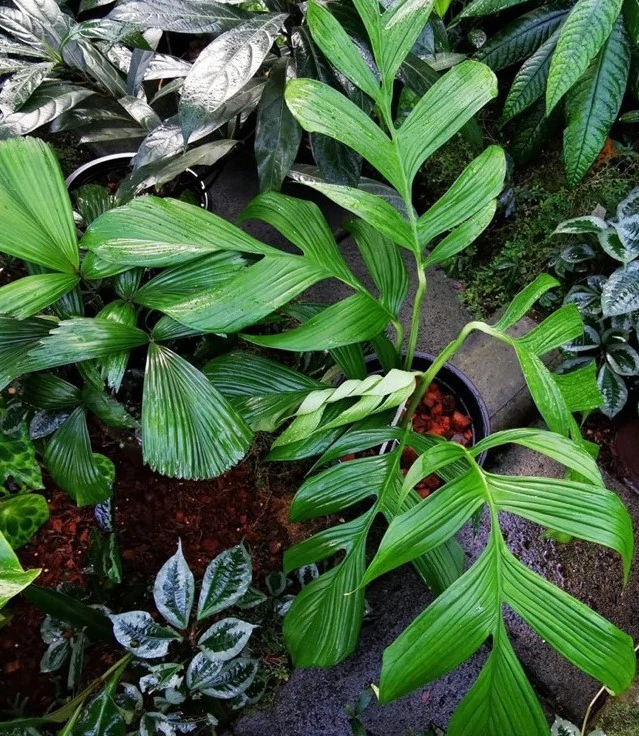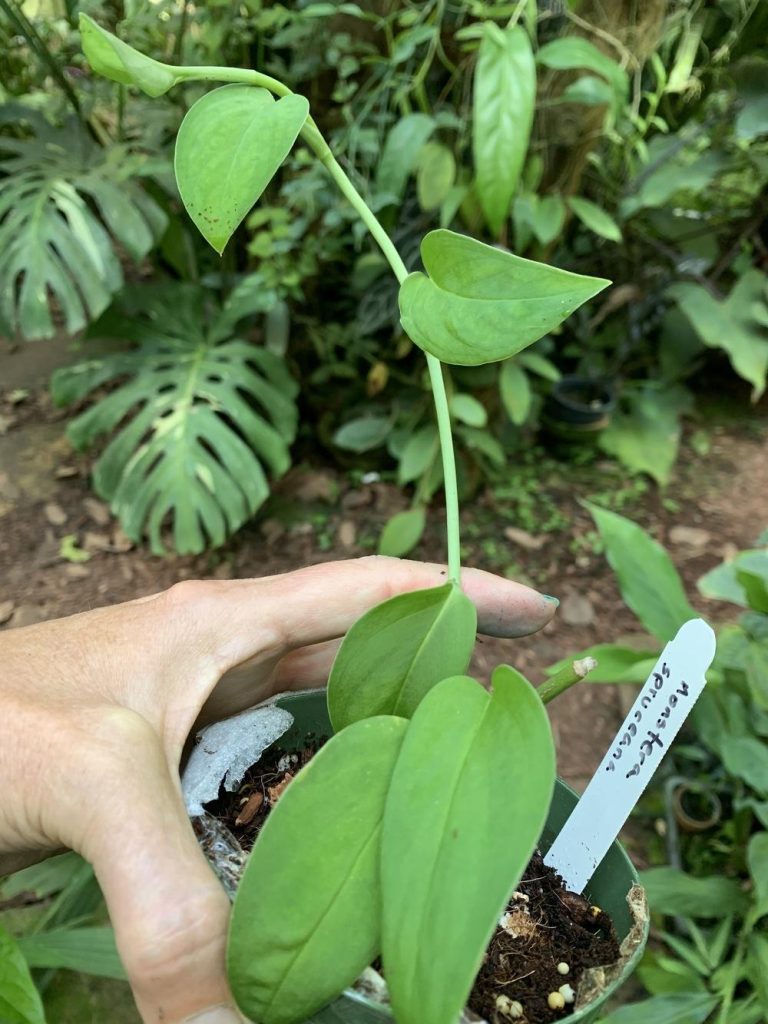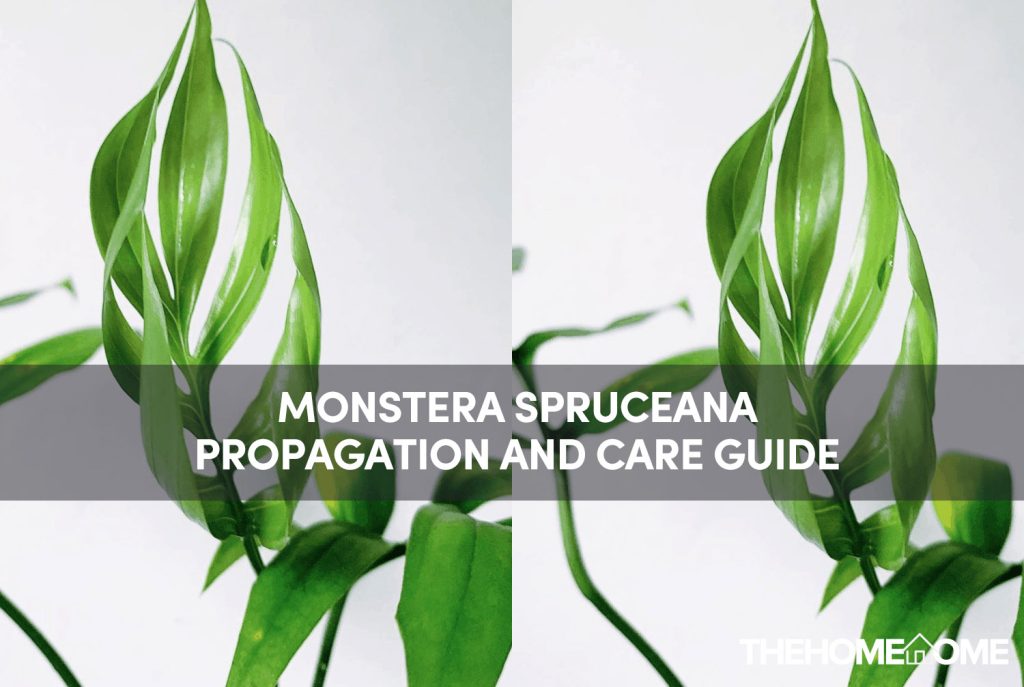Not every houseplant has a fascinating background. The Monstera Spruceana was named after an English botanist, Richard Bruce. This distinct houseplant is marked by increasing splits between leaves as the plant matures.
The Monstera Spruceana is well-known for its attractive qualities, as it can readily blend into the aesthetic setting of your home, whether indoors or out.
The low-maintenance plant is a popular choice for beginners because it is simple to propagate and care for. When cultivated in brightly colored containers and placed in a spot where it can complement the style of your home, the Monstera Spruceana’s beauty is usually enhanced.
The basic needs of your Monstera Spruceana are watering, appropriate soil mix, proper temperature and humidity, regular pruning, and a pest-free environment.
Everything you need to know about growing and caring for your Monstera Spruceana is right here.
Monstera Spruceana Plant Profile
This is the plant profile of the Monstera Spruceana.
| Botanical name | Monstera Spruceana |
| Origin | Central and Tropical South America |
| Family | Araceae |
| Light | Bright indirect light |
| Watering | Moderate watering |
| Temperature | 60°F-80°F |
| Plant Feature | Trailing Stems |
| Toxicity | Toxic to pets and humans |
| Propagation Style | Indoor and Outdoor propagation |
| Food | Balanced liquid-based fertilizer |
| Humidity | Low humidity |
| Foliage color | Green |
| Susceptible Plant Issues | Root rot, Wilting leaves, Sparse growth, Yellow/ Brown / Dried Leaves, and Pest Infestations. |
Propagation of Monstera Spruceana

Spring and summer are the best times to propagate your Monstera Spruceana. This is when their roots are most active. Monstera Spruceana can be born in a variety of ways.
All methods of Monstera Spruceana propagation have been described for you. Certain propagation methods are more straightforward and require less skill than others. Certain tools and needs are required for successful Monstera Spruceana propagation. They are:
- The mother plant of Monstera Spruceana
- Organic soil
- Hand pruners
- Grafting knife
- Pot / Container
- Dibble
- Water
- String or twine.
- Plastic wrap
- Small plastic piece or bottle.
- Sphagnum peat moss.
- Rooting hormone (optional).
The methods for propagating Monstera Spruceana are these:
1. Stem Cutting in The Soil
These are the steps for propagating Monstera Spruceana using the soil propagation method:
- Step 1: Pour your organic soil into your container. Water it thoroughly till the water drains through it.
- Step 2: Using your pruning shears, select and cut a healthy stem with at least two nodes. Ensure you cut below the node. Each cutting should have at least 3 leaves along the stem.
- Step 3: Remove the leaves from the stem cutting’s bottom node.
- Step 4: Apply your rooting hormone to the stem base (optional).
- Step 5: Using a dribble, make a hole in your potting mix and securely insert your cutting. Ensure the soil holds your cutting firm till it stands upright.
- Step 6: Mist the plant.
- Step 7: Place the container in an area where it can receive bright indirect light.
With proper care and attention, healthy roots should develop within 4 months and should be ready for transplanting. Fully developed roots can be identified by tugging the plant gently to determine its resistance and sturdiness.
2. Stem Cutting in Water
This approach is particularly difficult and requires prior experience because one wrong step can result in a frail root. It does, however, allow the grower to monitor the Monstera Spruceana’s progress. The grower can see if the plant is doing well or not using this method of propagation. To propagate Monstera Spruceana using the water propagation method, follow these steps:
- Step 1: Select and cut a healthy stem with at least 2 nodes using your pruning shear. Ensure you cut below the node. Each cutting should have at least 3 leaves along the stem.
- Step 2: Place the cutting in a clean glass jar.
- Step 3: Situate the plant where it can receive bright indirect light.
- Step 4: Change the water every 3-5 days. Ensure the water is always at room temperature; it must be neither too cold nor too hot. The water must never get murky.
With proper care, your Monstera Spruceana should start developing roots after 4 weeks. Growers must be patient with their Monstera Spruceana as it may take a longer time to detect notable growth.
3. Air layering
Unlike other propagations where the stem has to be severed from the mother branch, air layering requires that the stem is still attached to the mother plant for successful propagation. These are the steps to propagating Monstera Spruceana using the air layering propagation method:
- Step 1: Ensure your peat moss is moist
- Step 2: Cut through the base of one of the branches.
- Step 3: Insert a small piece of plastic between the cut areas to keep the plant from healing and thus seal the cut.
- Step 4: Gently wrap the stem with the peat moss till it is fully seated in the peat moss.
- Step 5: Use your plastic wrap to cover the moss.
- Step 6: Cut the branch from the mother plant once the roots have fully developed.
- Step 7: Remove the plastic wrap but do not remove the moss ball because the roots are tightly connected inside it.
- Step 8: Transfer the plant to another container with an organic soil mix. Ensure the container’s size is appropriate for the plant to prevent overwatering.
Air layering propagation requires that you give more care and attention to your Monstera Spruceana.
Monstera Spruceana Care Guide

Monstera Spruceana is a low-maintenance plant. These are the considerations you should pay attention to for the proper growth of your Monstera Spruceana.
1. Watering
When watered moderately, the Monstera Spruceana will thrive. The Monstera Spruceana needs to be watered at least once a week. Ensure the soil is thoroughly watered till it is moist. Your soil must never become waterlogged after watering. Furthermore, the soil should never be allowed to dry out completely. To gauge watering, always check the moisture content of the soil before watering.
2. Lighting
The Monstera Spruceana prefers being placed in a location where it can receive bright, indirect light. When kept indoors, window panes are suitable locations to place your Monstera Spruceana. If kept outdoors, your Monstera Spruceana should be grown in a shaded area where it can receive medium light.
3. Container
Choose a well-drilled container for your Monstera Spruceana. A suitable container would prevent the soil from ending up waterlogged. To complement the beauty of the Monstera Spruceana, choose an attractive, well-drilled container.
4. Organic Soil:
The Monstera Spruceana thrives best in organic soil composed of perlite moss, perlite, and other soilless mediums. The organic mix provided vital nutrients for the proper growth of your Monstera Spruceana.
5. Temperature/Humidity
The Monstera Spruceana should be grown in an area with a cool temperature and low humidity. The plant must not be grown in an environment with dry air or extreme temperatures, as this can result in plant problems.
6. Pruning
Pruning helps to keep your Monstera Spruceana attractive. Pruning helps get rid of damaged, diseased, and dead leaves. Doing this gives room for the faster growth of healthier leaves.
7. Fertilization
If you need to enhance the growth of your Monstera Spruceana, a balanced fertilizer is the most effective. You can fertilize your Monstera Spruceana once a month, but once you approach winter, avoid fertilizing the plant.
8. Repotting
Repotting should be considered every 12–18 months because as growth continues, the nutrients in the soil deplete. Repotting is also necessary when your Monstera Spruceana becomes root-bound and has outgrown its current pot.
Monstera Spruceana Plant Problems, Causes, And How To Fix Them
| Plant Problem | Signs | Causes | Solution | Prevention |
|---|---|---|---|---|
| Pest Infestation | The appearance of several insects and bugs on your plant. Holes on the foliage surface. Discoloration. Stunted growth. Wilting leaves. | Use infected equipment to prune your plant. When your plant comes in contact with an infected plant. | Ward off pests by spraying them with water. Use mild insecticides to treat infested plants. | Sterilize your equipment before pruning. Separate infested plants from healthy plants and discard them. |
| Wilting leaves | Plant losing its vigor. Yellow leaves. Edges of leaves turning brown. | Underwatering. Waterlogged soil root rot | Modify the watering schedule to suit the needs of the plant. The plant must never dry out. Repot the plant with fresh soil and reduce watering. | Never allow your soil to dry out before watering. When watering, your soil must never become water-logged. Use a well-drilled container for potting and gauge the moisture level of your soil before watering. |
| Yellow leaves | Discoloration of foliage appearance. | OverwateringUnderwatering. Overfertilization. Root rot. Exposure to bright sunlight. Poor humidity. | Avoid watering till the soil is moist. Never allow the soil to dry out before watering. Do not neglect the watering needs of the plant. Fertilize plants periodically and not frequently. Change the location of the plant to a place where it would receive medium lighting. Use a humidifier or regularly mist the leaves to improve humidity for your Monstera Spruceana. | Do not neglect the watering needs of the plant. Avoid overwatering the plant. Place your monstera Spruceana in a location where it can receive bright but indirect light. |
| Brown/Burnt leaves | Discoloration of foliage appearance | Underwatering. Sunburn. Overfertilization. | Regularly water the plant. The soil must never end up soggy. Place your Monstera Sprueana in a shaded location where it can receive bright indirect sunlight. Fertilize the plant periodically. | |
| Root rot | Change in foliage appearance and color of the plant. The odor from roots. Stunted growth, dropping leaves Mushy roots. | Overwatering | Repot the plant with fresh soil. Do not water the plant till the roots recover. | Use a well-drilled container that allows water to drain well. Your soil must never end up waterlogged after watering. |
Growing Tips For Monstera Spruceana
Here are some additional tips for growing the Monstera Spruceana plant.
- Get your Monstera Spruceana staked while it’s still young. Bamboo canes and moss air poles can be used to support your Monstera Spruceana.
- Any plant that displays evidence of rot or fungal disease should be discarded.
- Snip the plant’s yellow or brown leaves.
- If you’re going to move your Monstera Spruceana outside, do it gradually over two weeks. Before bringing the plants inside, leave them outside for about 2 hours, then gradually extend the time exposure. This lessens the impact of an environmental shock.
- Always have more than two specimens for any propagation method you choose in case one fails.
Conclusion
We are sure you will have a successful propagation if you follow our propagation guidelines and adopt the tips we have provided.
We recommend joining an active houseplant community where you can garner information from the experience of houseplant professionals.

